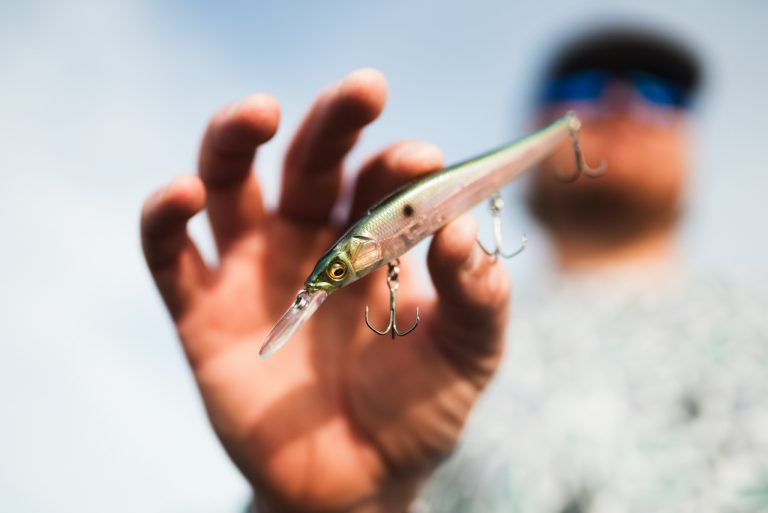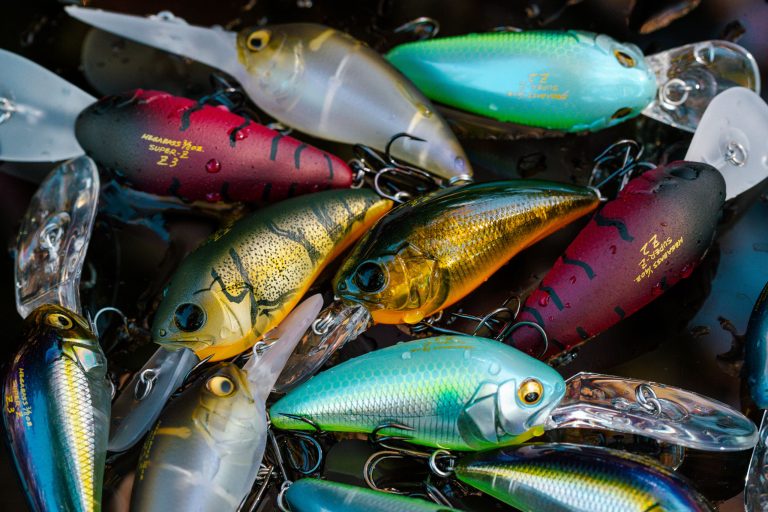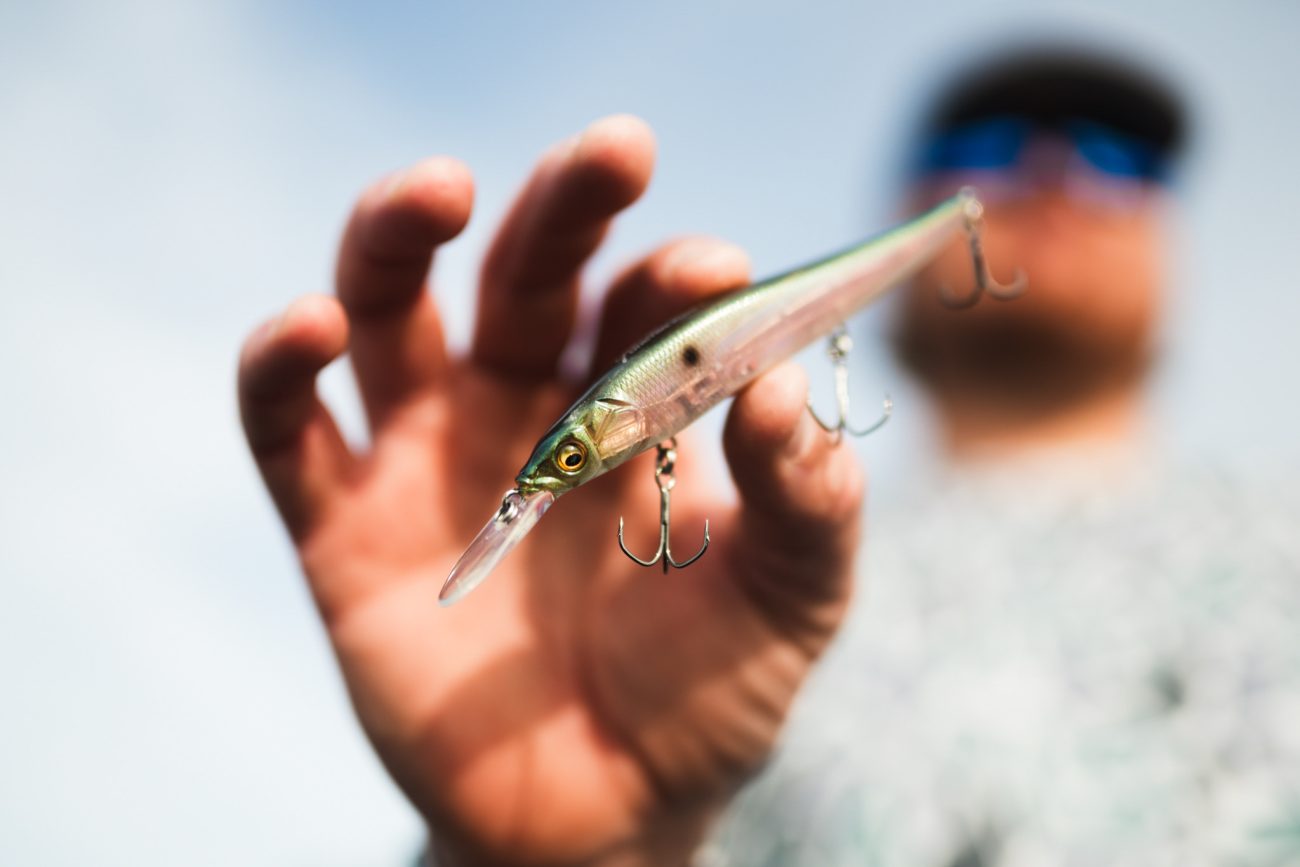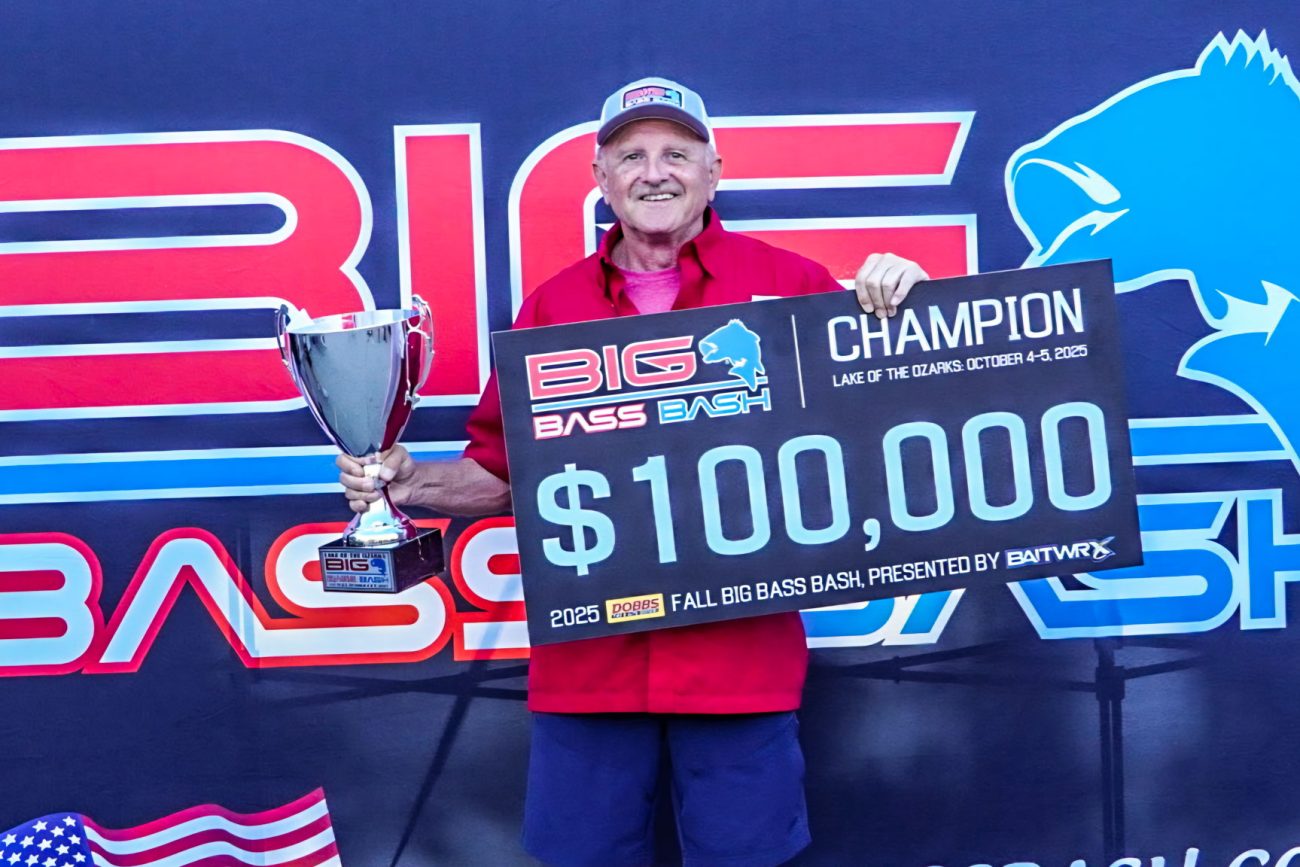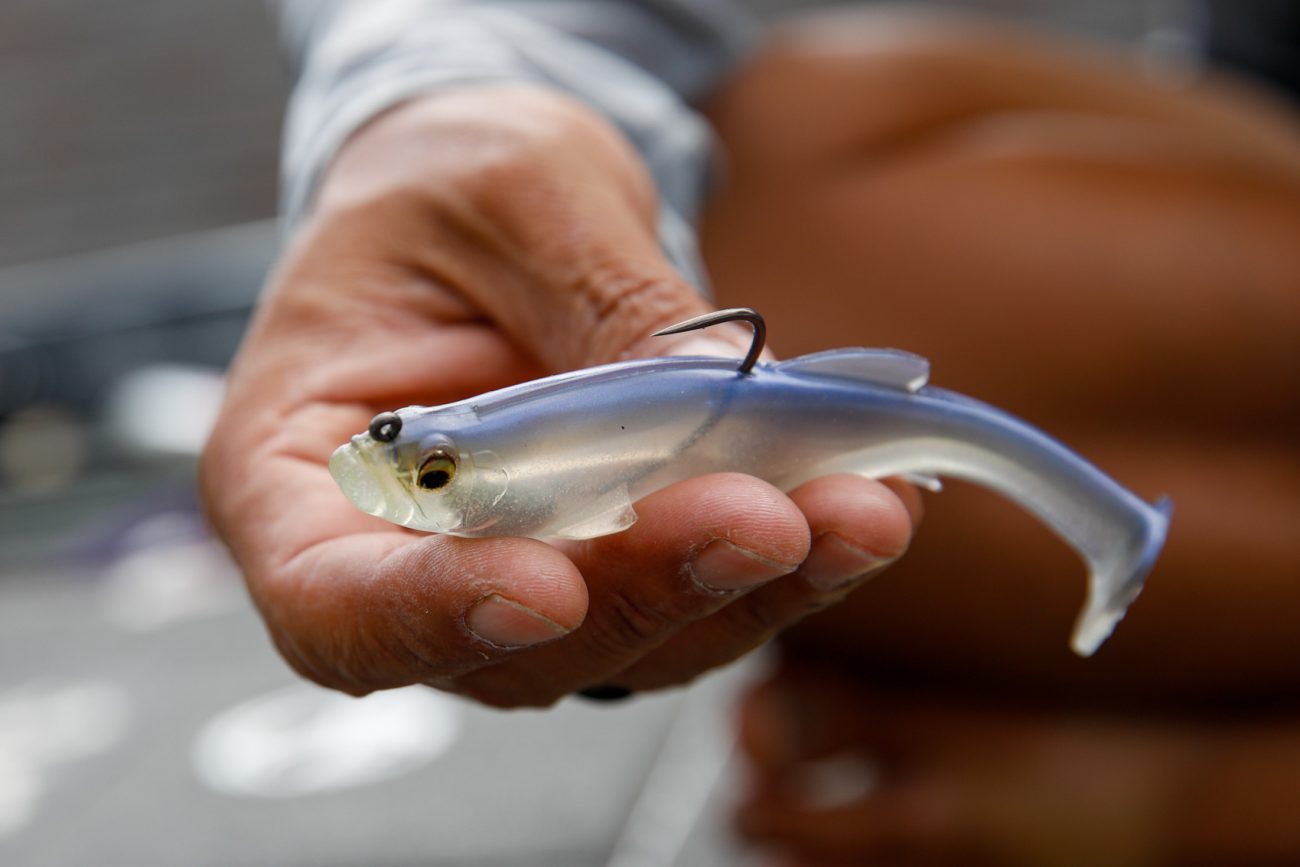Many bass anglers set lofty goals, but few of them set them as high or put as much concentrated effort into reaching them as Cobi Pellerito.
“Most of my adult life has been tailored to chasing trophy smallmouth,” he said. With 41 of them over 7 pounds, and now five over 8 pounds, you could say that he’d accomplished what he’d set out to do, but his thirst for giant bronze fish had not been satisfied. He kept on dialing in a “specific zone with the genetic potential to produce fish of that caliber” and then recently he topped them all with a 9 pound giant.
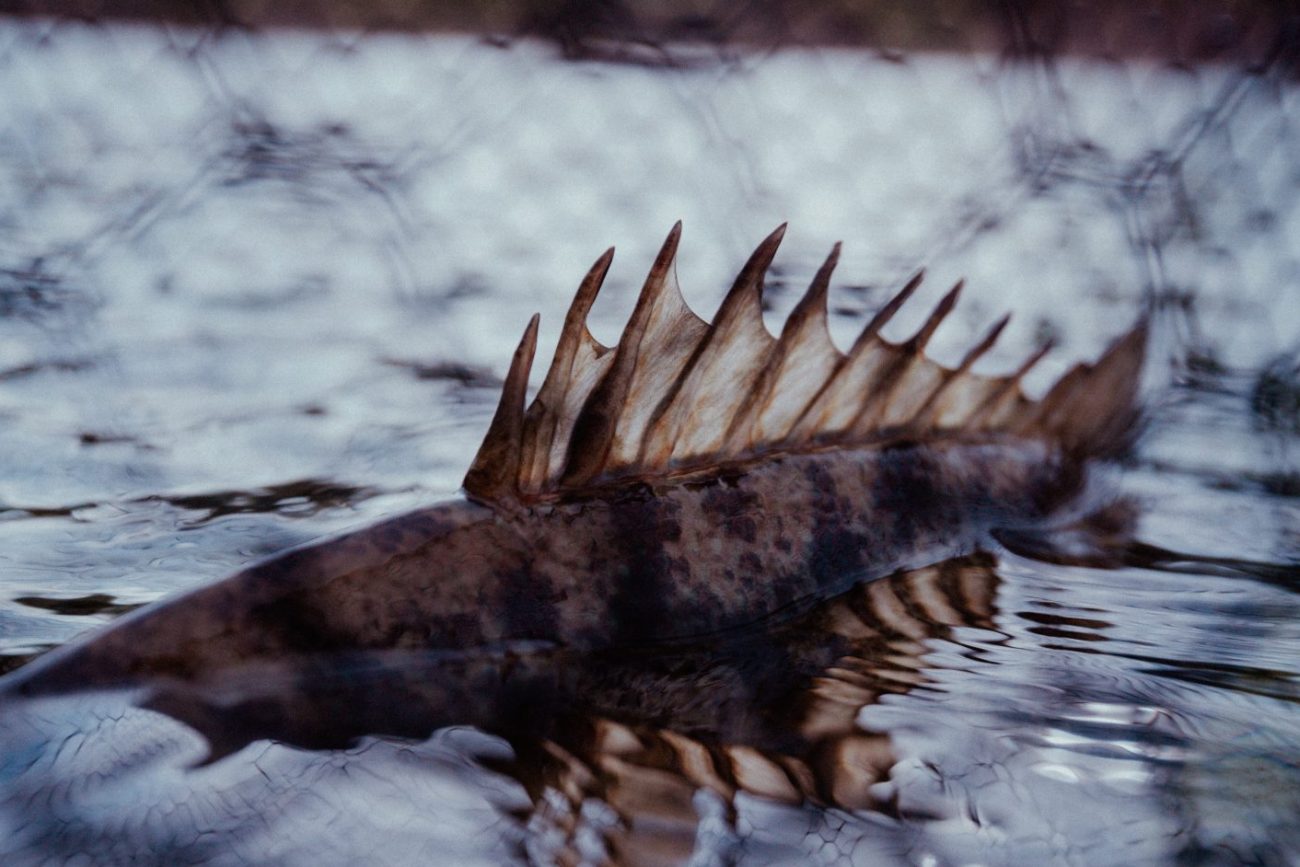
He knew fish of that class lived there. Indeed, there’d been a Great Lakes double digit landed last year, but those fish are the next best thing to a unicorn. There was no guarantee that he’d ever cross paths with one, no matter how much he dialed things in. So what happens when an angler achieves such a milestone?
“I’m not one to get super-emotional,” he said. “But when I got her in the net, I got all choked up. This fish means so much to me. I started to cry.
And then when he’d taken care of business, he got back to doing what he does best, searching for one that’s bigger.
“I don’t want to be greedy,” he concluded. “But I’m going to keep working on this until the day I die.”
Here’s how his tremendous catch went down:
Playing the Conditions and Circumstances
As a result of the thousands of hours he’s spent fishing and graphing, winnowing down the playing field and focusing on the most minute details, Pellerito knew that there was an open bite window.
“There was a steady warming trend with a major moon phase approaching,” he recalled. “I started seeing really large fish coming up. Those fish don’t make mistakes. A lot of them spawn in 15 to 20 feet of water, much deeper than average-sized fish. I usually just get a quick glimpse of them as they come shallow to warm their eggs.”
His day started with a 6-12 brute, a trophy by any measure, but not the fish he was looking for. Indeed, fishing during this time period is typically very visual – he sees fish cruising on breaks, sand flats and rock reefs – but he wasn’t seeing many bass, particularly not in the proper size class. It’s rare for him to catch more than 10 fish when he’s out fishing this way, and a typical outing produces fewer than six, but again, he wasn’t searching for numbers.
Despite the fact that he was focusing on key zones, there was still an expansive amount of water to cover. In particular, as the day progressed he hit a rock ridge with sand behind it, where the depth dropped from 2 to 4 feet. It was a spot he’d fished before, but not this year. His first choice for covering water is the DARK SLEEPER, and he sent a pinpoint cast out to explore that ridgeline.
At the end of the ridge, he popped the lure and felt the shock of a hard hit through his fluorocarbon. The fish was on for a fraction of a second and then escaped. He let the DARK SLEEPER sit, popped it again, and saw his line jump. This time there was no weight on his line. Focused on keeping the lure in the fish’s line of vision, he scooted it across the sand, watched his line jump again, and then it went tight.
“It came up and couldn’t clear the water,” he said. “It was just wallowing.” The water was super-shallow, so the fish had nowhere to go but up, and stayed on the surface for five or ten seconds. Based on his experience, he knew that it was a big fish, but not exactly how big. “I couldn’t pull her. I just wanted to make sure that I didn’t give her any slack.”
When the fish eventually tired, he scooped her at boatside, pulled in her, and that’s when he got emotional. “I started to cry,” he said. His previous biggest smallmouth was an 8-2 that he caught last spring. From the depth of the tail and the width of the fish’s back, he could tell that “this one was in a different class.”
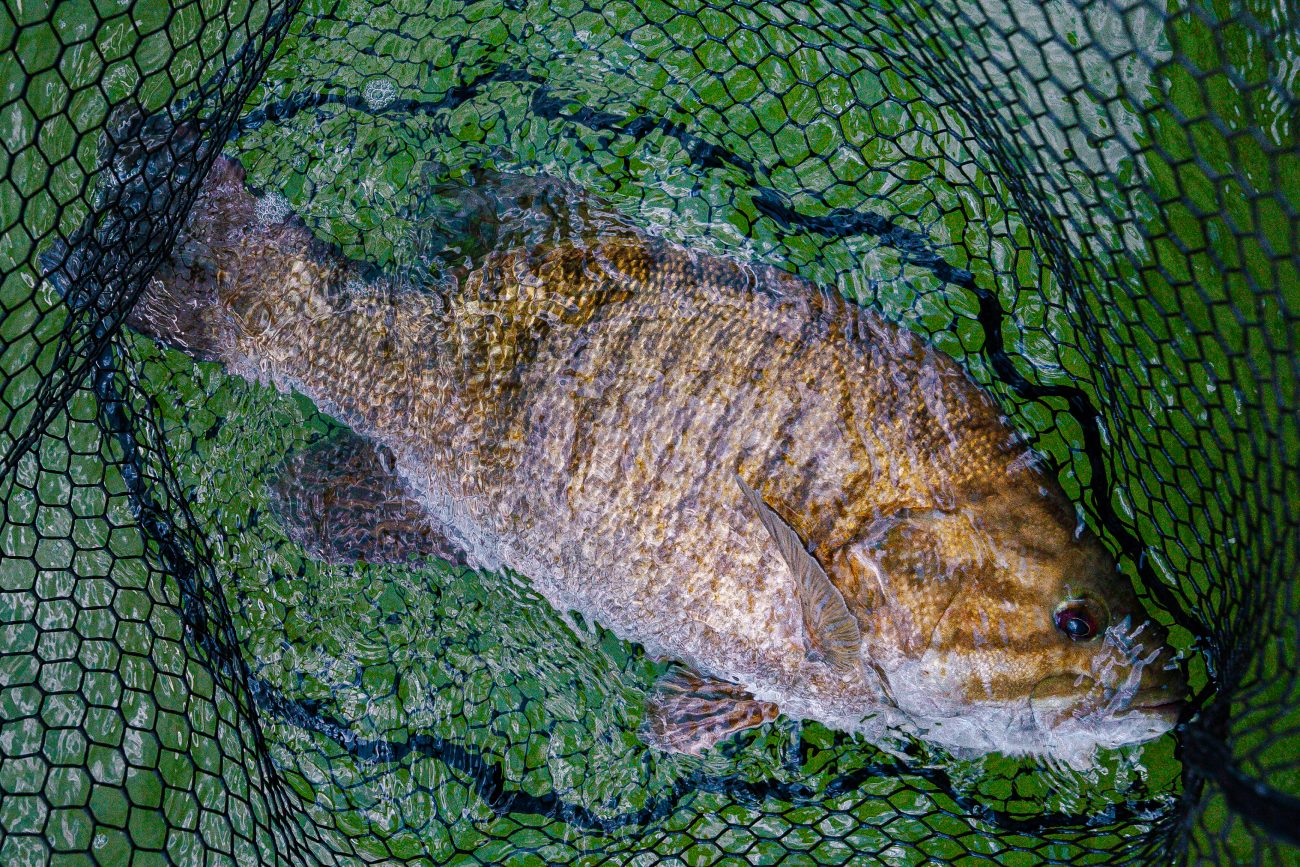
After taking a moment to collect, he facetimed his wife and daughter. His wife was alarmed: “Are you ok?” she asked.
“All I can say is that I caught her,” he replied.
He wanted to get the fish back in the water immediately, but he also wanted an accurate weight. His Brecknell scale was bouncing between 8-15 and 9-12, so he beached the boat and Power Poled down to pin it in place. The scale locked in at 9-3.
“She was 23 inches long and 18 inches around,” he said. “That’s not much more girth than my 8-2, which was 22 1/8 by 17.5”. It was just that the rest of her frame was so much bigger.”
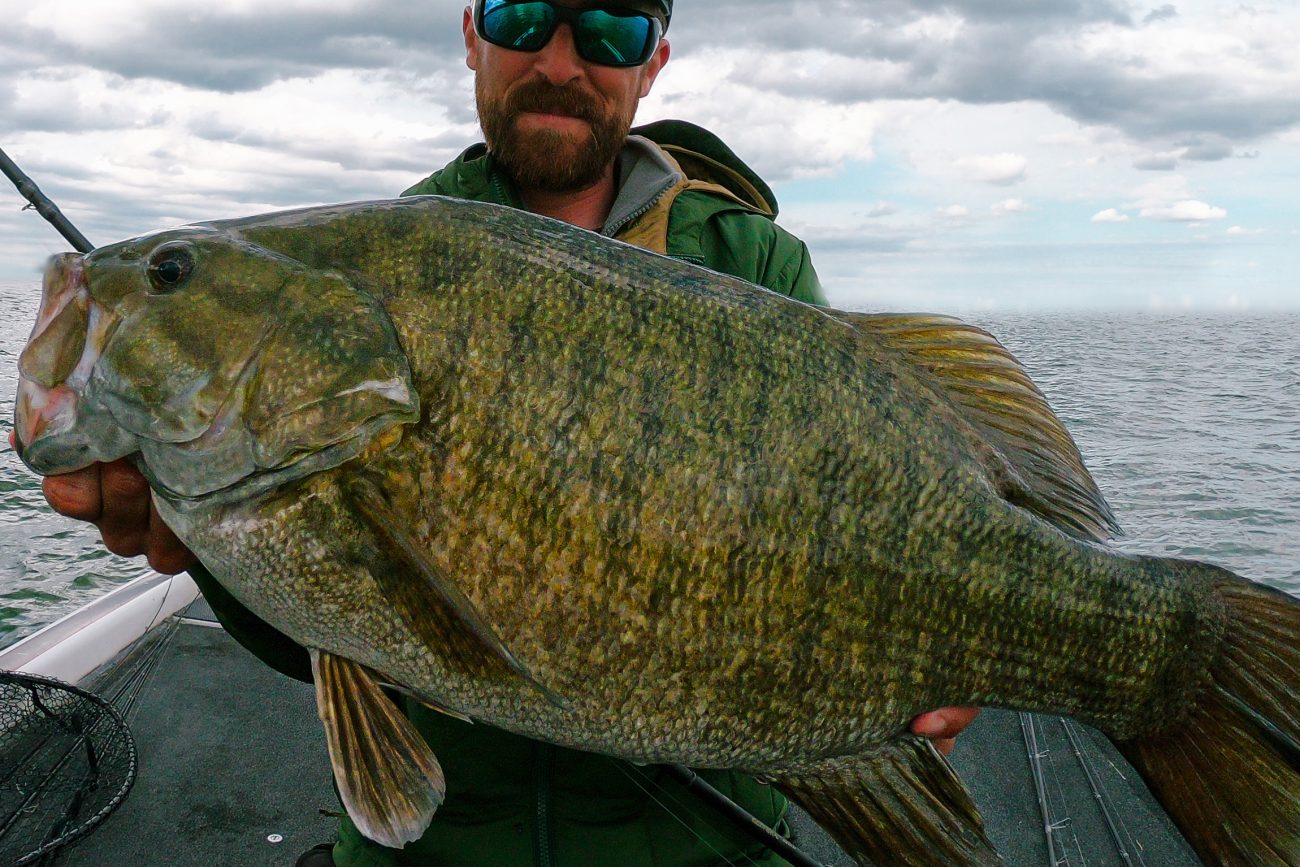
Dialing in the Presentation
Pellerito admits that there was a small element of luck in his catch. “What are the odds that a fish of that caliber goes for the DARK SLEEPER three times?” Nevertheless, he knows that of his many hours studying the habits of trophy smallmouths, he was also set up to make the best of his circumstances.
“I had the right bait, it the right colors, and the boat was positioned carefully,” he said. “I had no sonar on. Everything was just so right.”
That starts with the DARK SLEEPER, a versatile bait that can be cast and wound like a compact swimbait to cover water, but it also has crossover appeal as a bottom contact bait with dragging and hopping presentations.
“Those 8- and 9-pounders, you won’t find them following the masses,” he said. “They’ve seen all of the spinnerbaits and tubes and jigs you can throw at them. They’ve had enough uncomfortable interactions with boats and humans. They become mostly open basin relating fish. That provides the least amount of interaction with the bass guys.”
In addition to representing a goby exceptionally well, the 2.4” to 3” lengths of the DARK SLEEPER match the size of even the giants’ preferred forage.
“I like the lighter ones in shallow water,” he explained. “The bait has a flat profiled face so it has a tendency to ride high and then a little shimmy when you pause or let it fall. On a windy day I’ll go a little heavier. Three quarters of an ounce sounds like a lot, but again, this bait rides high. Sometimes they like that faster reaction – a little puff of sand can be very impactful, and gobies tend to move in quick bursts and spurts.
Because this is typically a clear water, very visual bite, he tends to prefer colors that blend in with the environment and replicate the forage. Those include Haze, Wakasagi and Biwako Yoshinobori, as well as Mutsugorou. However, he also relies heavily on Shiraou, which may not fit that palette above water, but he noted that “it’s translucent, which means it blends well and reflects whatever is around it.”
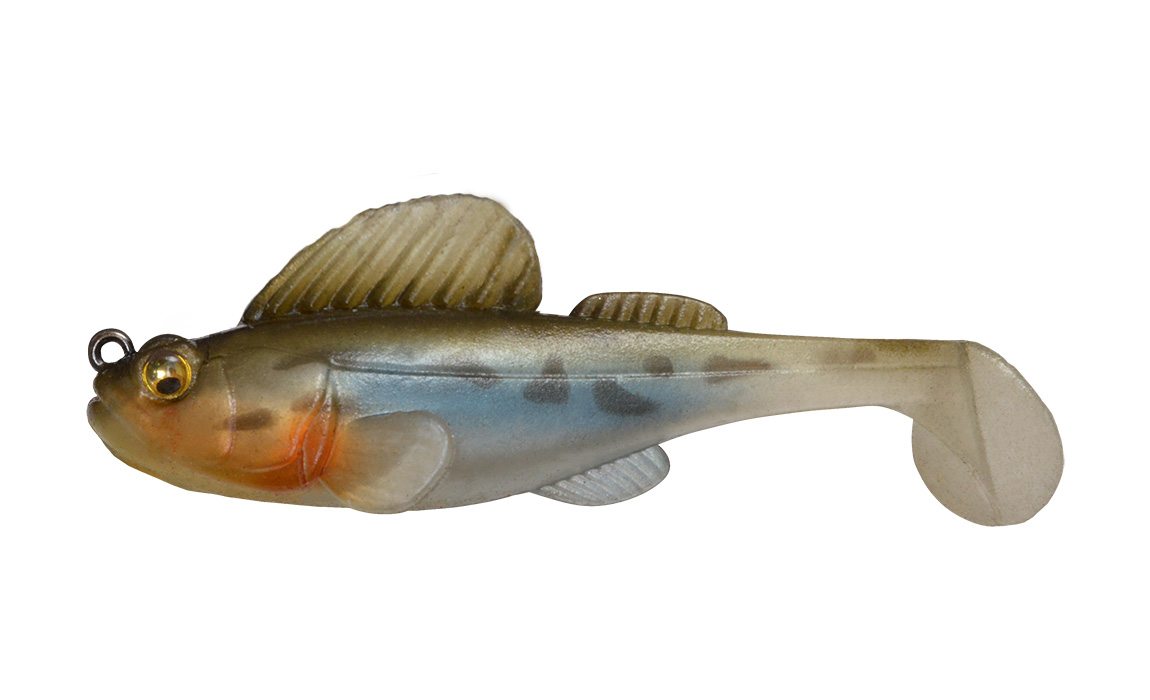

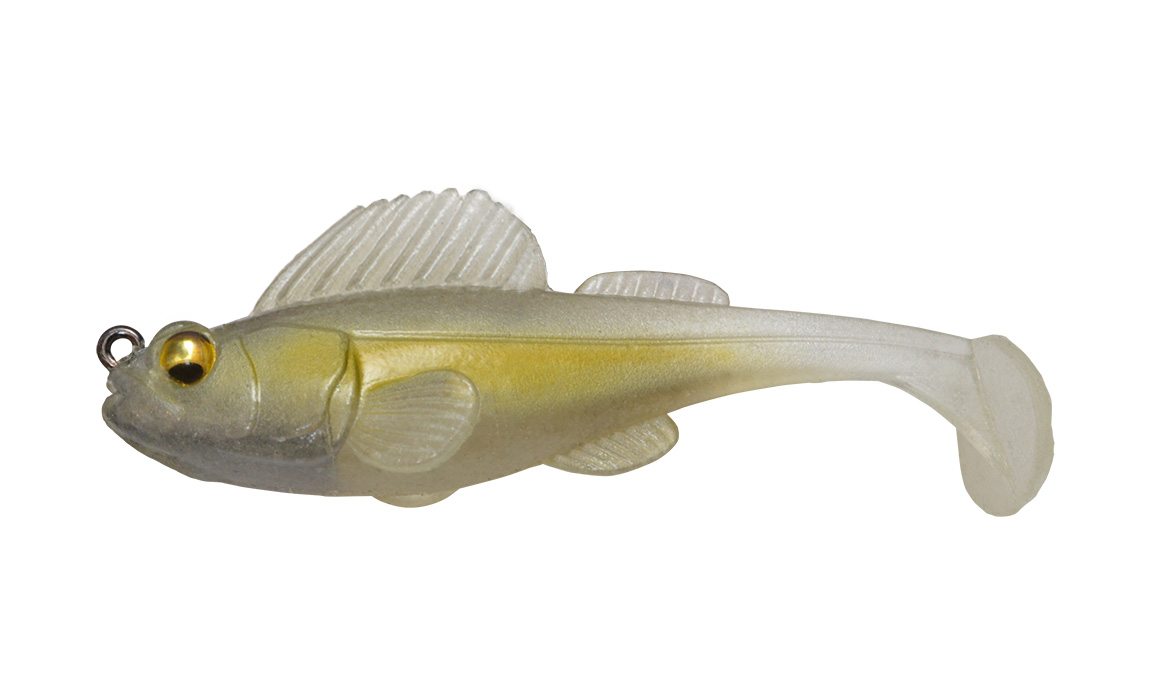
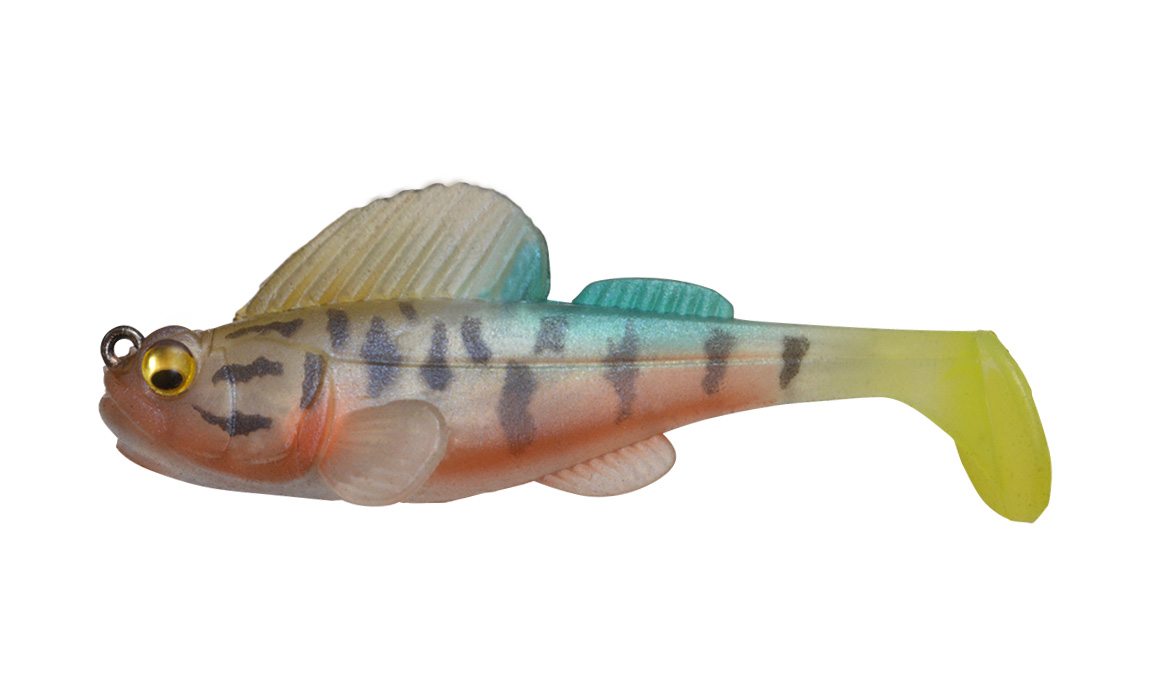
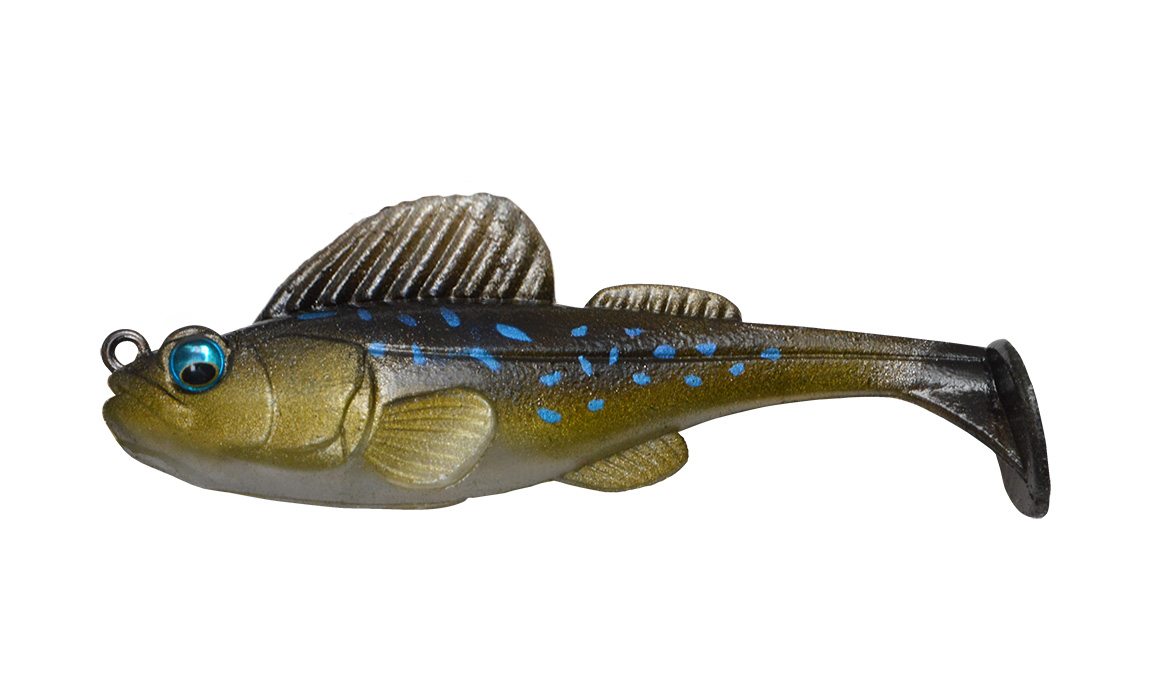
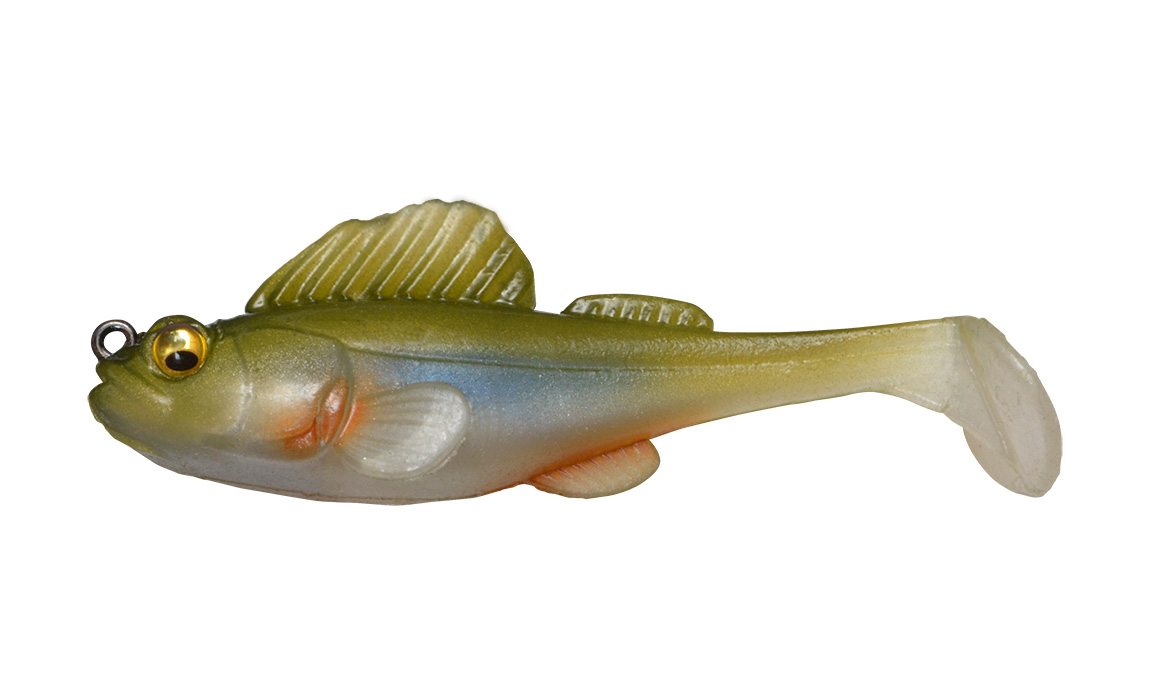
Slight Tweaks Can Make a Difference
Pellerito’s 9-pound-plus monster came on an unmodified DARK SLEEPER straight out of the package. However, some of the lure’s strengths – it’s relative weedlessness thanks to the fins protecting the hook with a regular-sized gap, can occasionally merit some slight mods.
“If they’re not eating it aggressively, there’s occasionally a tendency for them not to get hooked well,” he explained. In that case, he’ll often add a trailer hook if cover allows. Around reeds and grass that might be a #2 Decoy single hook, while around sand it could be a #8 or #10 Gamakatsu treble. Both are held in place with a rubber stop.
One other occasional change he’ll make in extreme circumstances is to take a set of bolt cutters and cut the jig hook flush with the bait. Then, depending on the water visibility, he’ll tie a short section of braid or fluorocarbon to the eyelet, with the other end attached to a #4 treble. He’ll use one prong to pin the hook in place on the lure’s back, and the other two will sit on either side of the fin. Once a fish is hooked, it pops free. Not only does that reduce the leverage of a leaping fish, but it enables the lure itself to last longer.
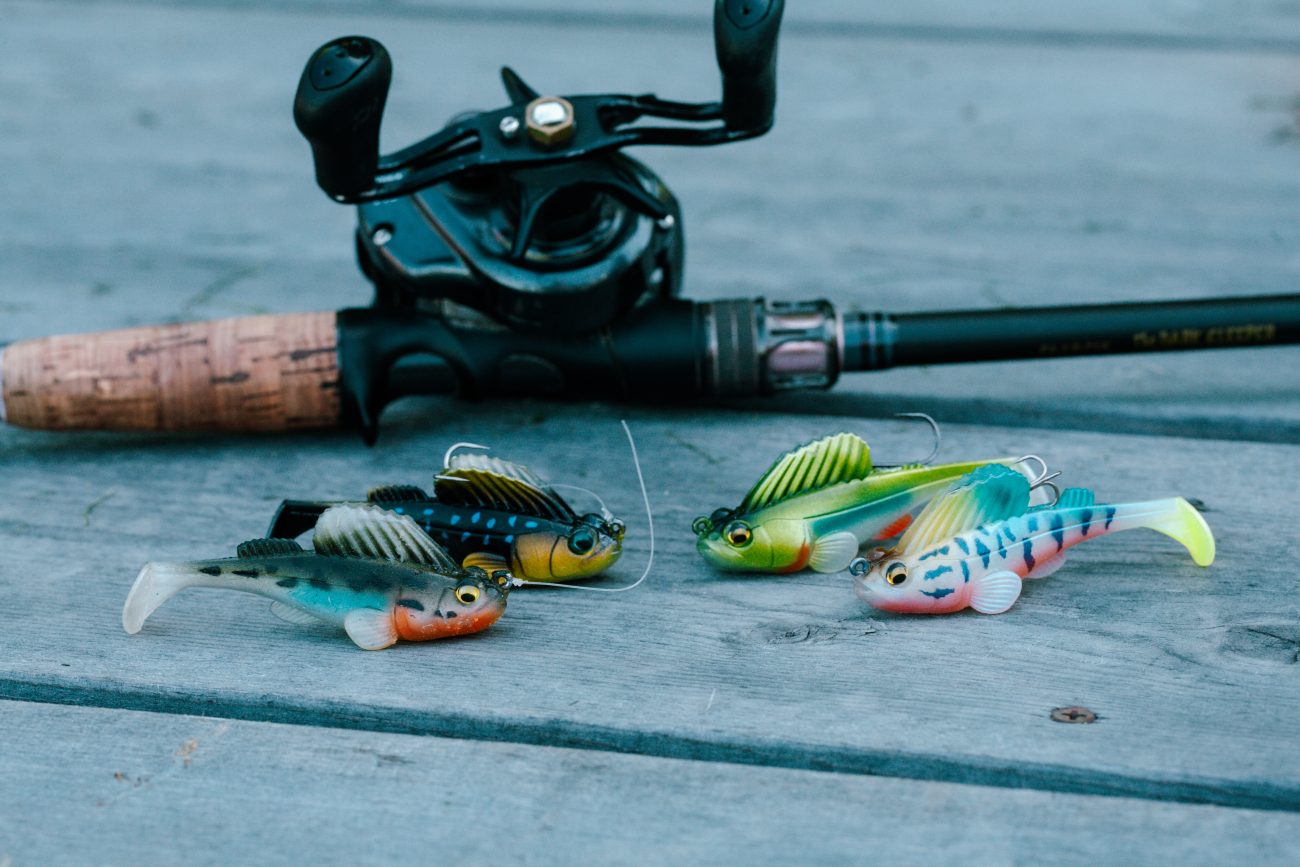
Dark Sleeper Tackle Choices
Until last season, Pellerito fished the 3-inch DARK SLEEPER on the OROCHI XX EMTF, a 7’5” medium action casting rod. He liked the soft taper, which provided just the right about of give when a fish sucked the lure in. This year he switched to the DESTROYER P5 DARK SLEEPER rod. It’s 4 inches shorter, and a bit softer. At first, he thought it was too soft for his liking, but over time he’s realized that his bite-to-land ratio has improved substantially.
He typically pairs it with a 7.3:1 Daiwa Tatula from two or three generations past, and spools the reel with either 12 or 20 pound straight Sunline FC Sniper fluorocarbon. The lighter line gets the call in relatively open water, while the heavier choice is employed around reeds or areas of heavy zebra mussel infestations.
He fishes the smaller DARK SLEEPER (2.4in) on spinning gear, specifically the OROCHI XX ENFORCER, a 7’4” rod that he uses for a wide variety of finesse techniques. He pairs it with a Daiwa Tatula spinning reel, typically in the 4000 size to allow for longer casts while producing less line twist. He spools it up with yellow Original Power Pro 10-pound braid with an 8- or 10-pound test fluorocarbon leader.
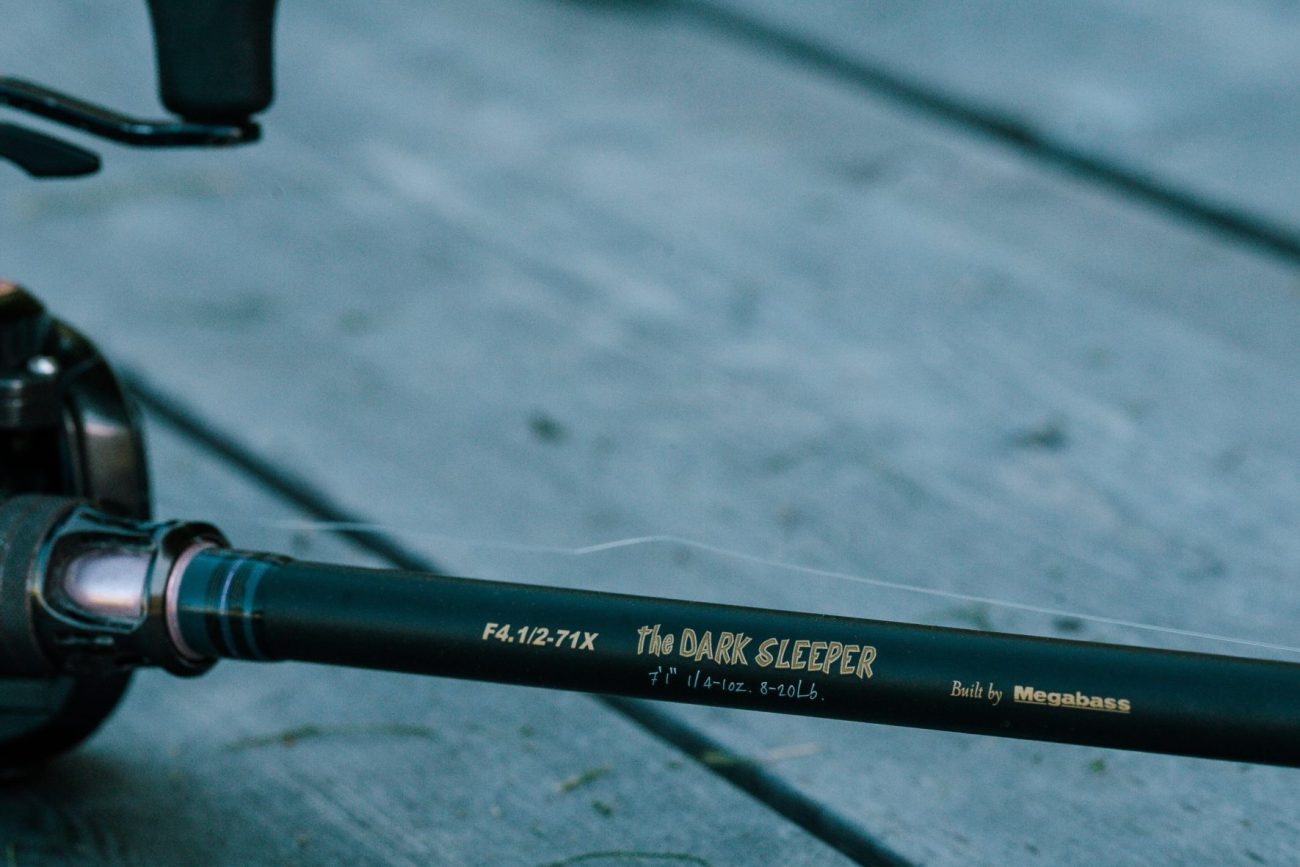
The Opportunity Ahead of Him
Pellerito spends enough time on the water to see not only the daily and hourly shifts, but also generational changes, and he believes that the golden days of trophy Great Lakes smallmouth fishing may be upon us.
“Six pounds is still the mark that we strive for, but they were much rarer in past generations,” he said. “Now we’re seeing younger fish hit that mark. That used to be a 12 to 14 year old fish. I’m not a biology nerd on this stuff, but now a fish that big might be 8 or 9 years old, or less.”
Once fish hit that class, they don’t want to be around their smaller counterparts. “They’re like the cool kid in high school,” he joked. “They’re usually living an entirely different lifestyle.”
Accordingly, he takes copious notes, and has honed both a science approach and instinct as a result of his time on the water.
“I have several stretches that I call money zones,” he said. “I want to be in those zones during the prime windows. I remember that line of Rick Clunn’s from when I was a teenager – you have to control all of the variables that you can control.”
He admits, though, that while he knew that fish existed, it changed his frame of reference. Shortly after catching it he landed another one over 6 pounds and while he said he “still got jittery, still got stoked,” he also “couldn’t believe how much smaller that fish was.”
With the prime window largely closed for 2024, now begins the time-consuming preparations for when the next window opens.
“There is a 9-4, there is a 10-pounder out there,” he said. “Those fish do exist. With my whole heart I believe I’m fishing the right places at the right times with the right equipment. I just need to cross paths with that fish. My ultimate goal is to break double digits. Every fiber of my being loves these smallmouth. I love learning about them, what they do, and how they interact. It means so much to cross another threshold, but I’m still geeked up to chase the next one.”

